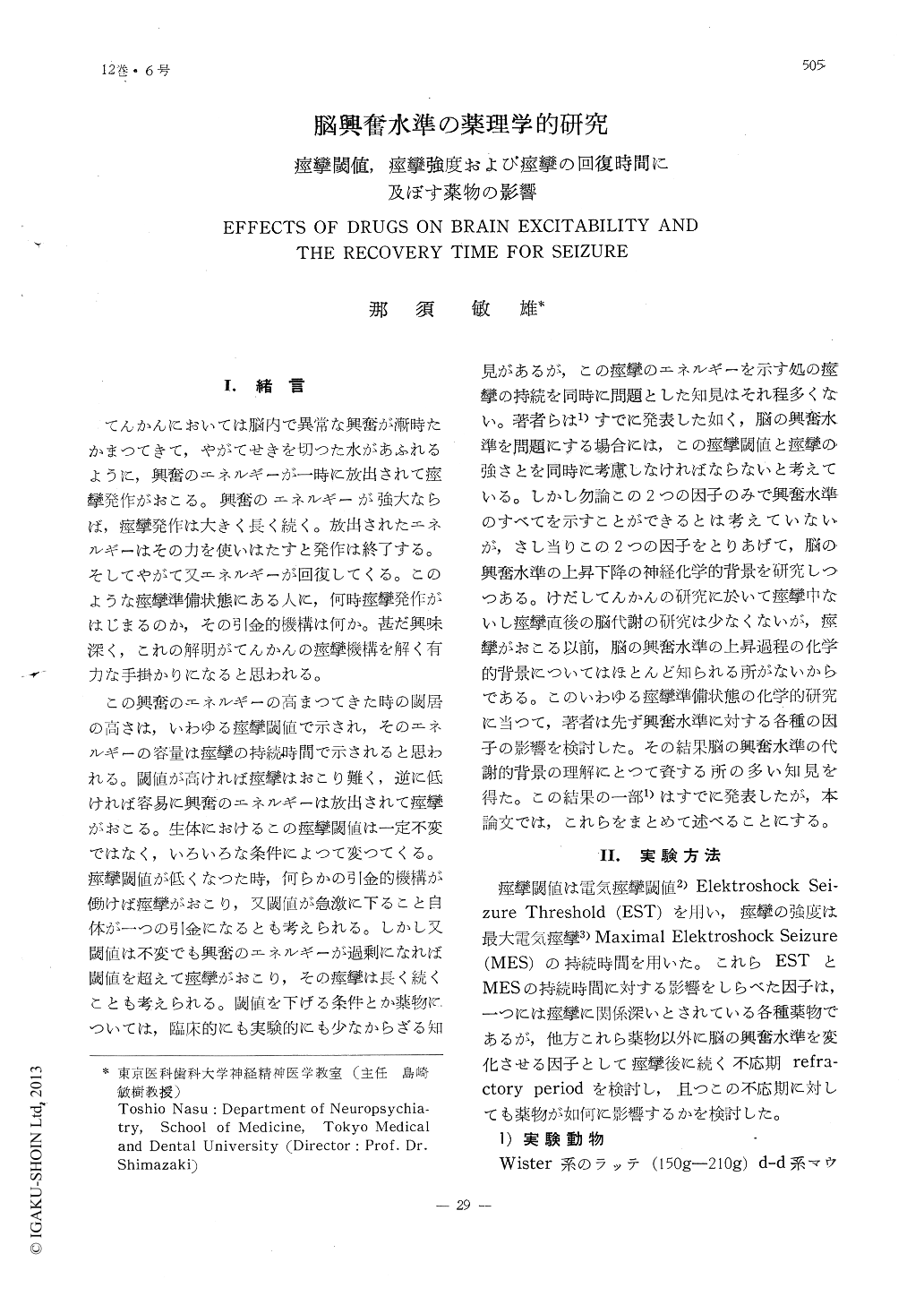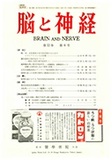Japanese
English
- 有料閲覧
- Abstract 文献概要
- 1ページ目 Look Inside
I.緒言
てんかんにおいては脳内で異常な興奮が漸時たかまつてきて,やがてせきを切つた水があふれるように,興奮のエネルギーが一時に放出されて痙攣発作がおこる。興奮のエネルギーが強大ならば,痙攣発作は大きく長く続く。放出されたエネルギーはその力を使いはたすと発作は終了する。そしてやがて又エネルギーが回復してくる。このような痙攣準備状態にある人に,何時痙攣発作がはじまるのか,その引金的機構は何か。甚だ興味深く,これの解明がてんかんの痙攣機構を解く有力な手掛かりになると思われる。
この興奮のエネルギーの高まつてきた時の閾居の高さは,いわゆる痙攣閾値で示され,そのエネルギーの容量は痙攣の持続時間で示されると思われる。閾値が高ければ痙攣はおこり難く,逆に低ければ容易に興奮のエネルギーは放出されて痙攣がおこる。生体におけるこの痙攣閾値は一定不変ではなく,いろいろな条件によつて変つてくる。痙攣閾値が低くなつた時,何らかの引金的機構が働けば痙攣がおこり,又閾値が急激に下ること自体が一つの引金になるとも考えられる。しかし又閾値は不変でも興奮のエネルギーが過剰になれば閾値を超えて痙攣がおこり,その痙攣は長く続くことも考えられる。閾値を下げる条件とか薬物については,臨床的にも実験的にも少なからざる知見があるが,この痙攣のエネルギーを示す処の痙攣の持続を同時に問題とした知見はそれ程多くない。
The neurochemical mechanisms concerned in changing brain excitability are of impor-tance for the understanding of seizure patho-physiology.
Changes in rat brain excitability following two week drug administration were measured using the electroshock threshold (EST) and maximal electroshock seizure (MES) duration techniques by the modified Woodbury's appa-ratus.
Effect of the acute administration of drugs on the refractory period of mice following the MES and EST were also measured. As a measure of the refractory period of animals was used the recovery time 50(RT50), which is, according to Woodbury, defined as the time required, after an initial electroshock seizure, for 50% of animals to recover to the extent that a second electroshock seizure can be elicited. The RT50 for MES and EST of mice was respectively 84 seconds and 15.1 minutes.
1) In the animals given ACTH, the EST was elevated, the duration of the tonic exten-sion phase of MES shortened and the reco-very time for EST hastened.
2) In the animals given hydrocortisone, the EST was lowered, the duration of MES pro-longed and the RT50 for EST hastened.

Copyright © 1960, Igaku-Shoin Ltd. All rights reserved.


